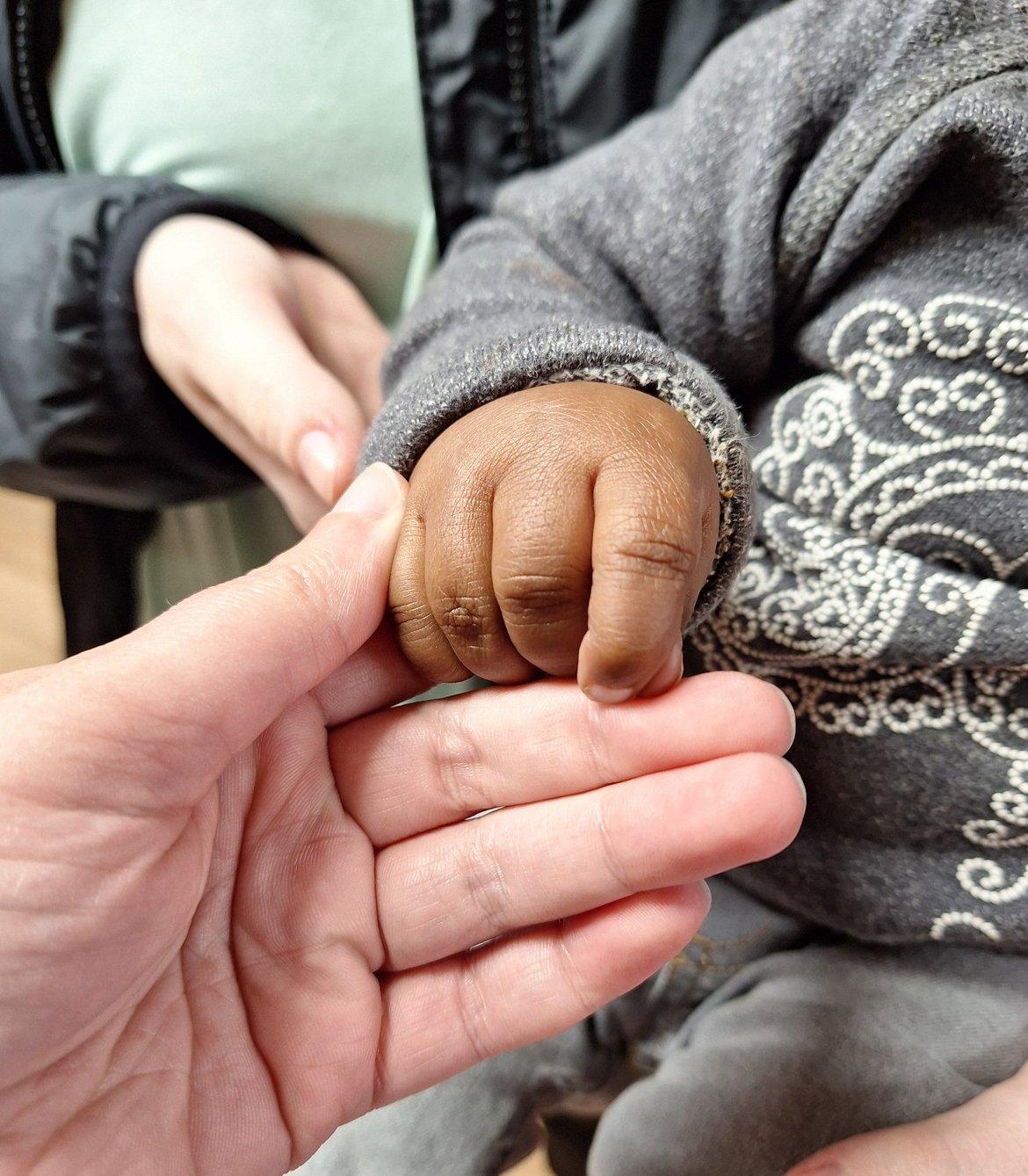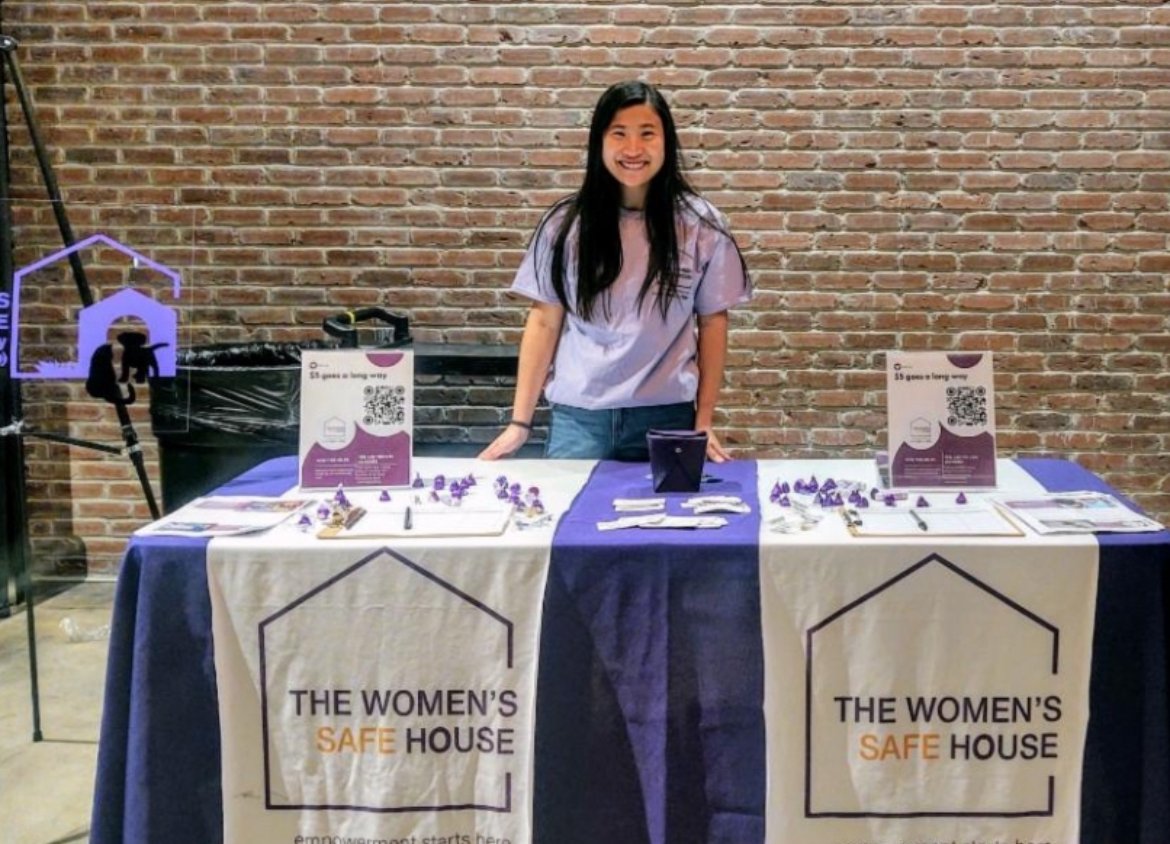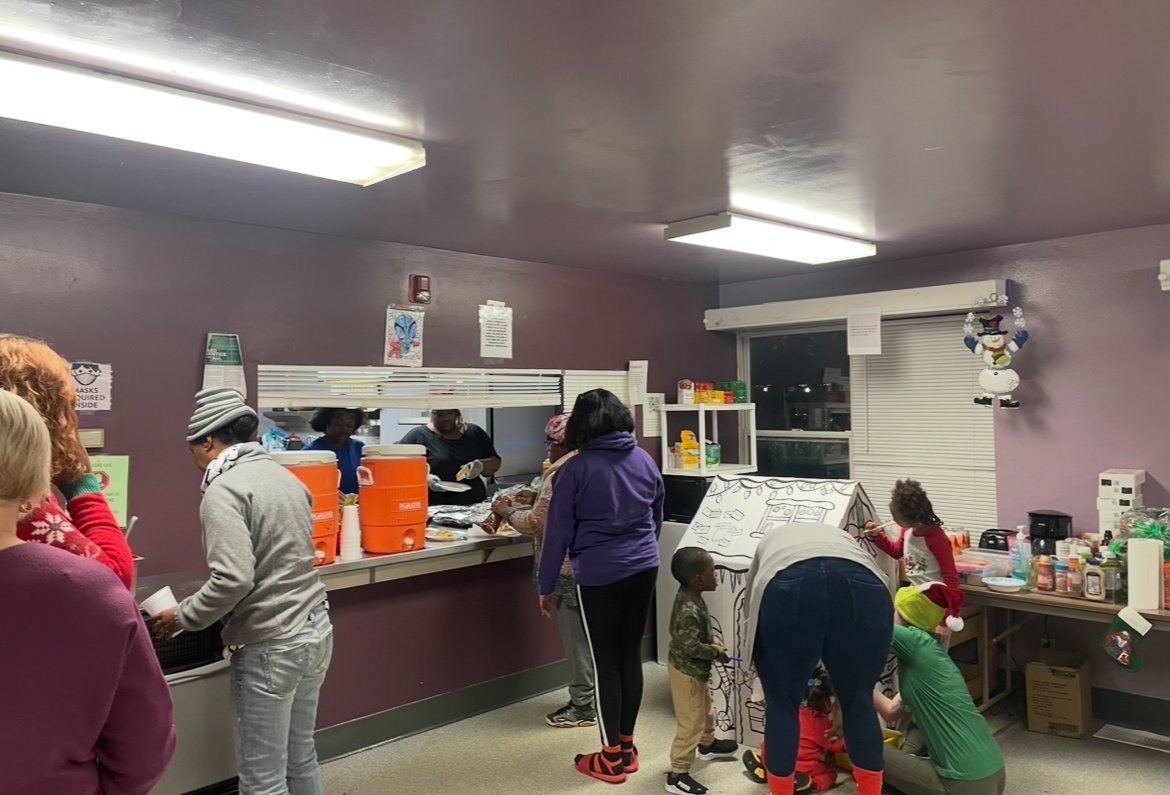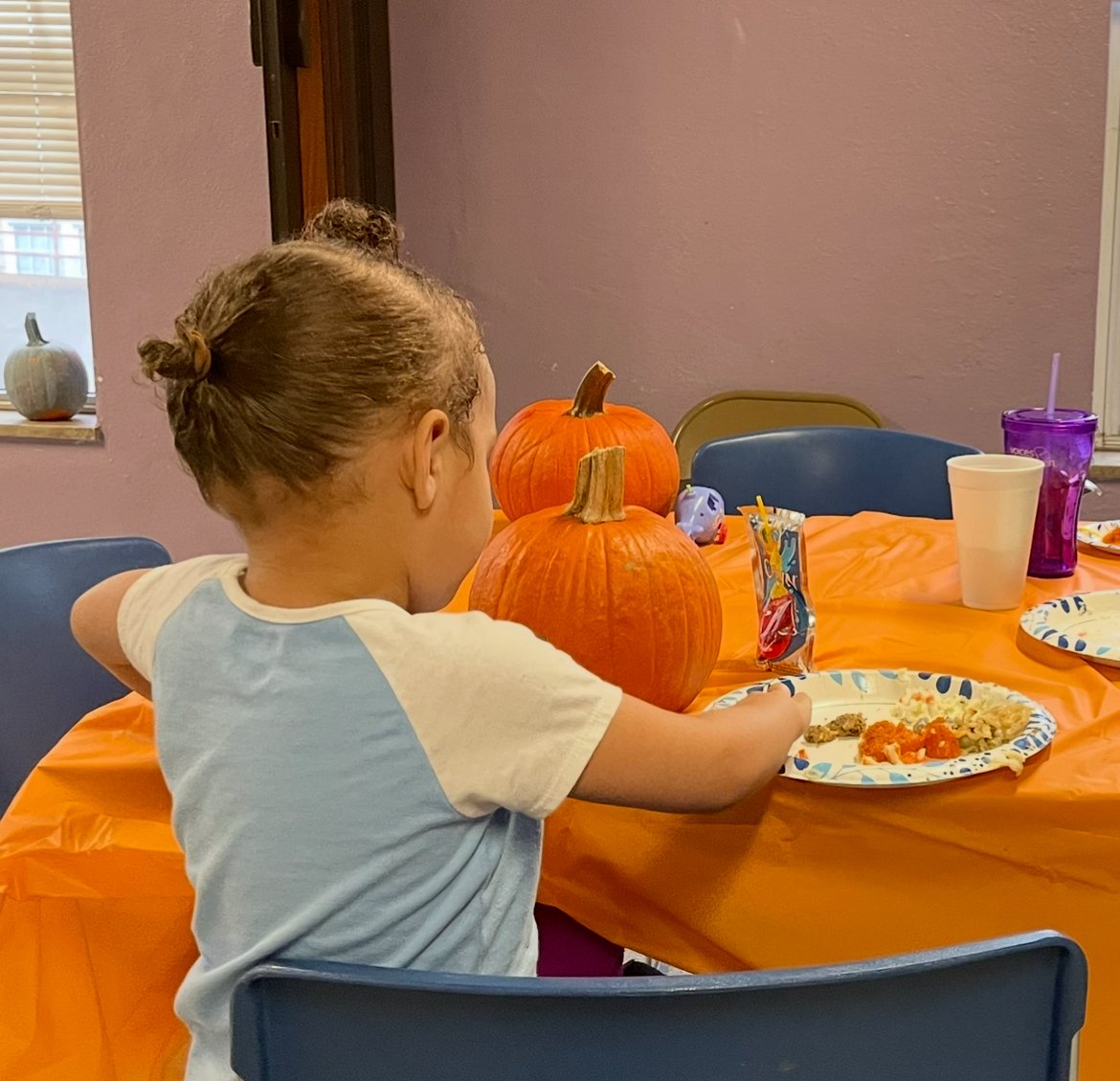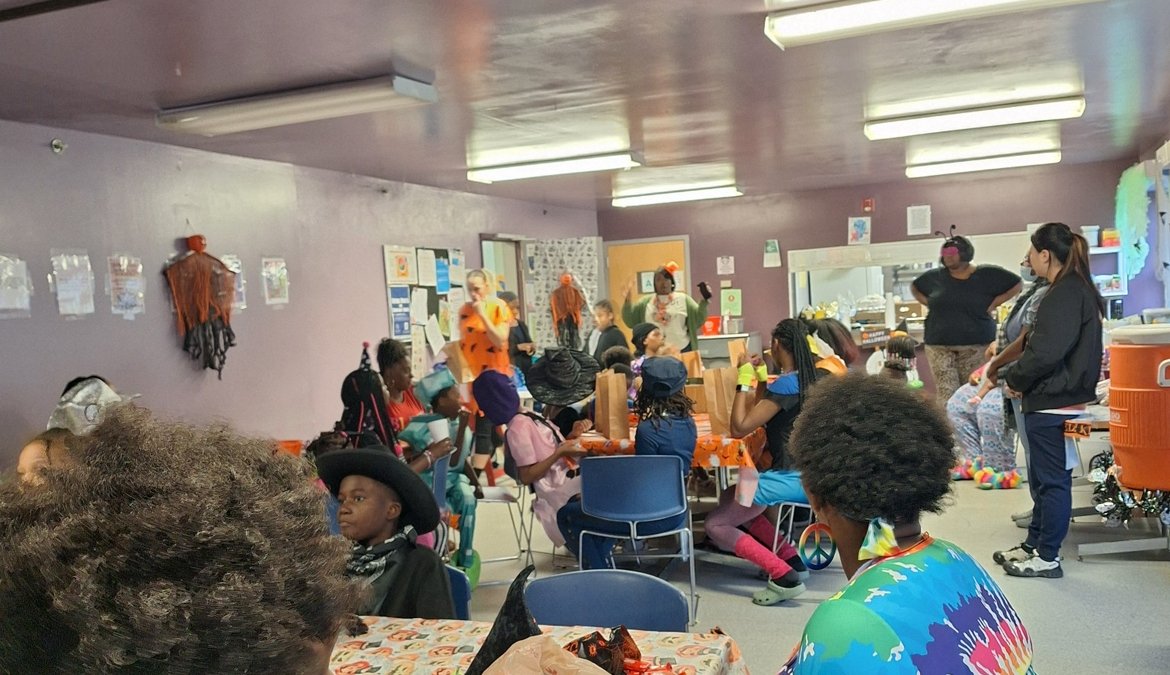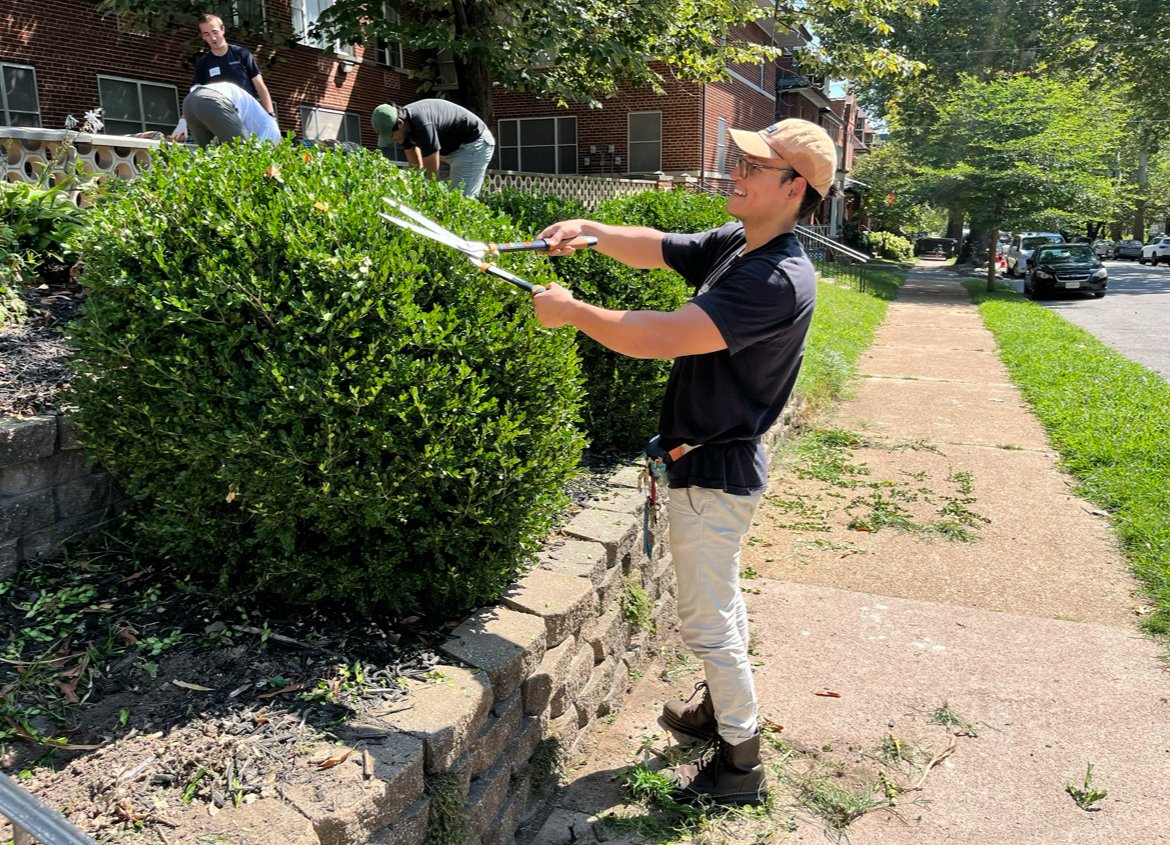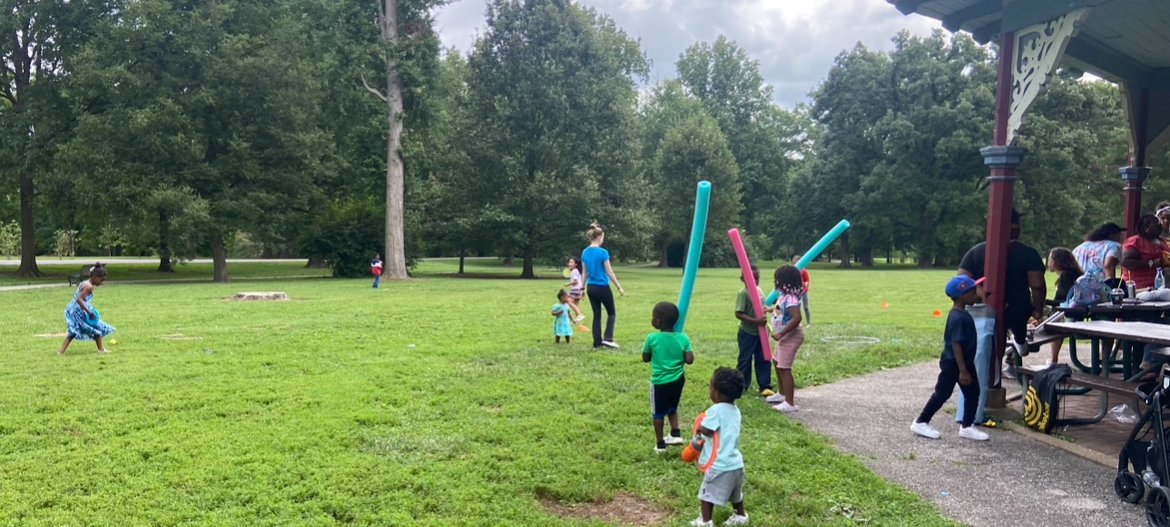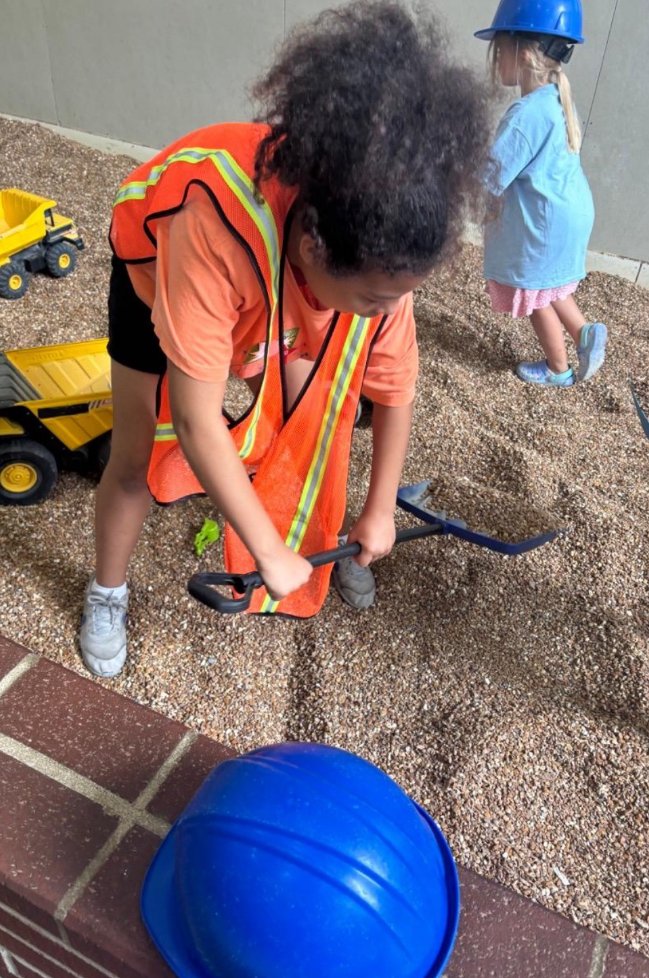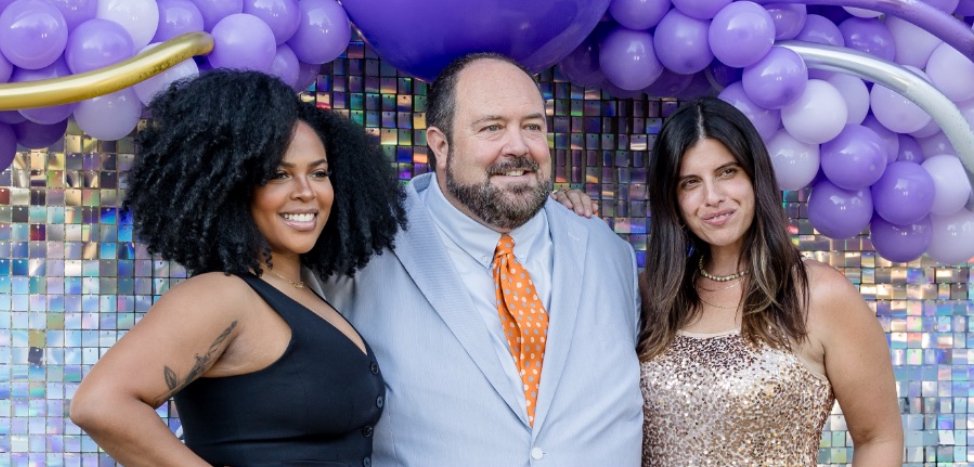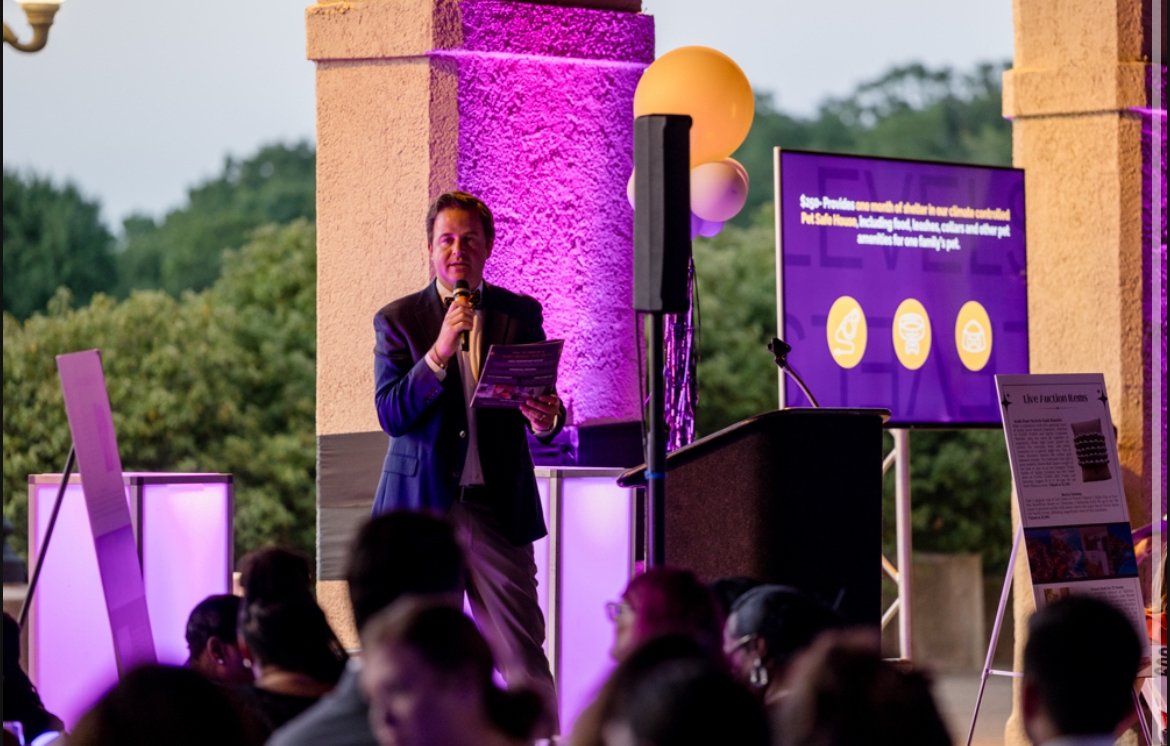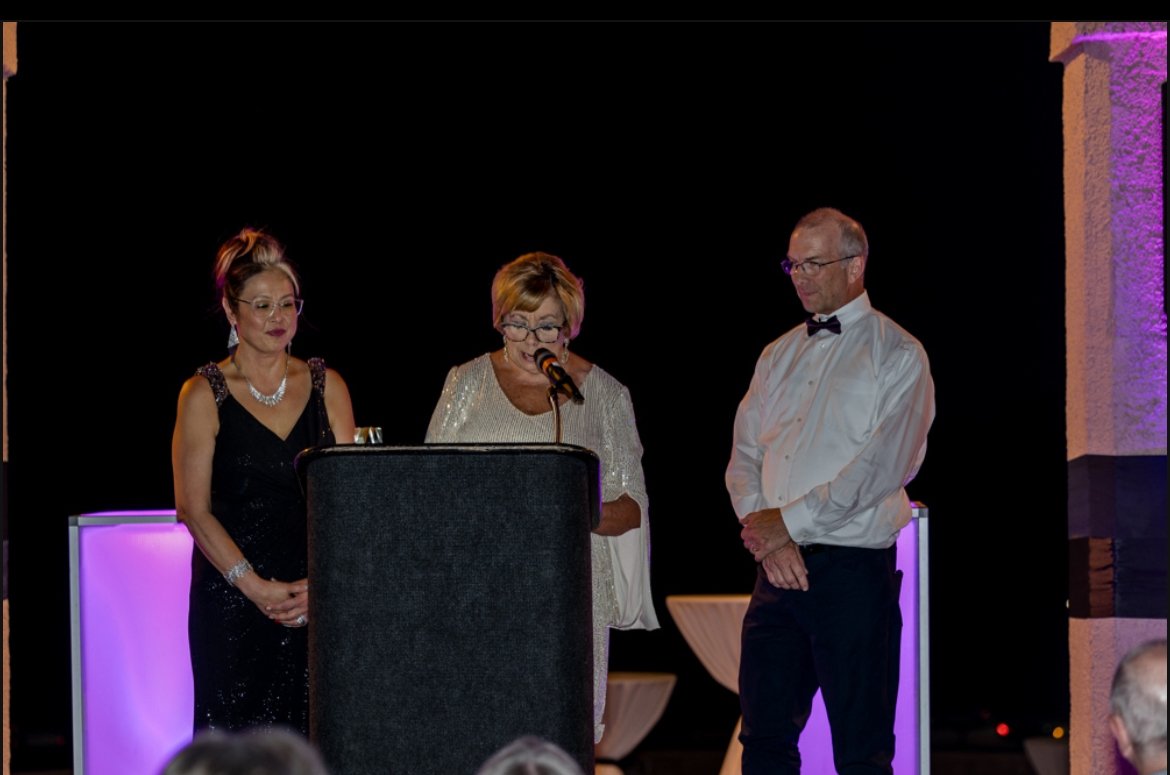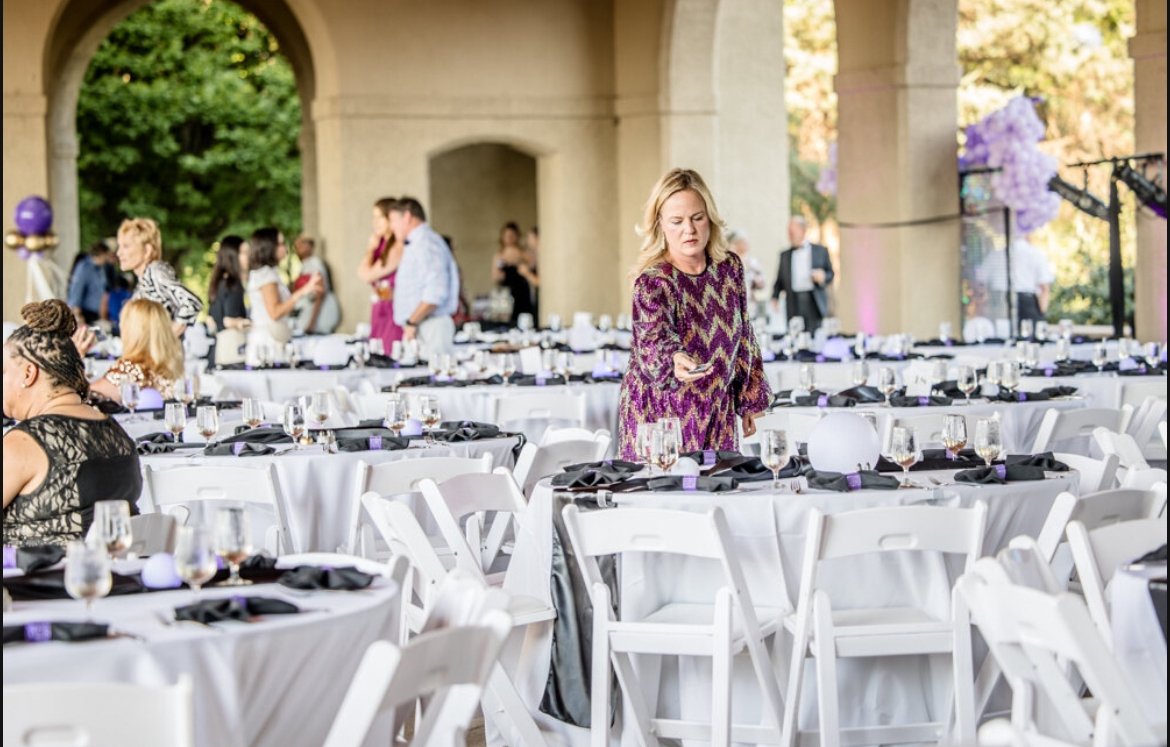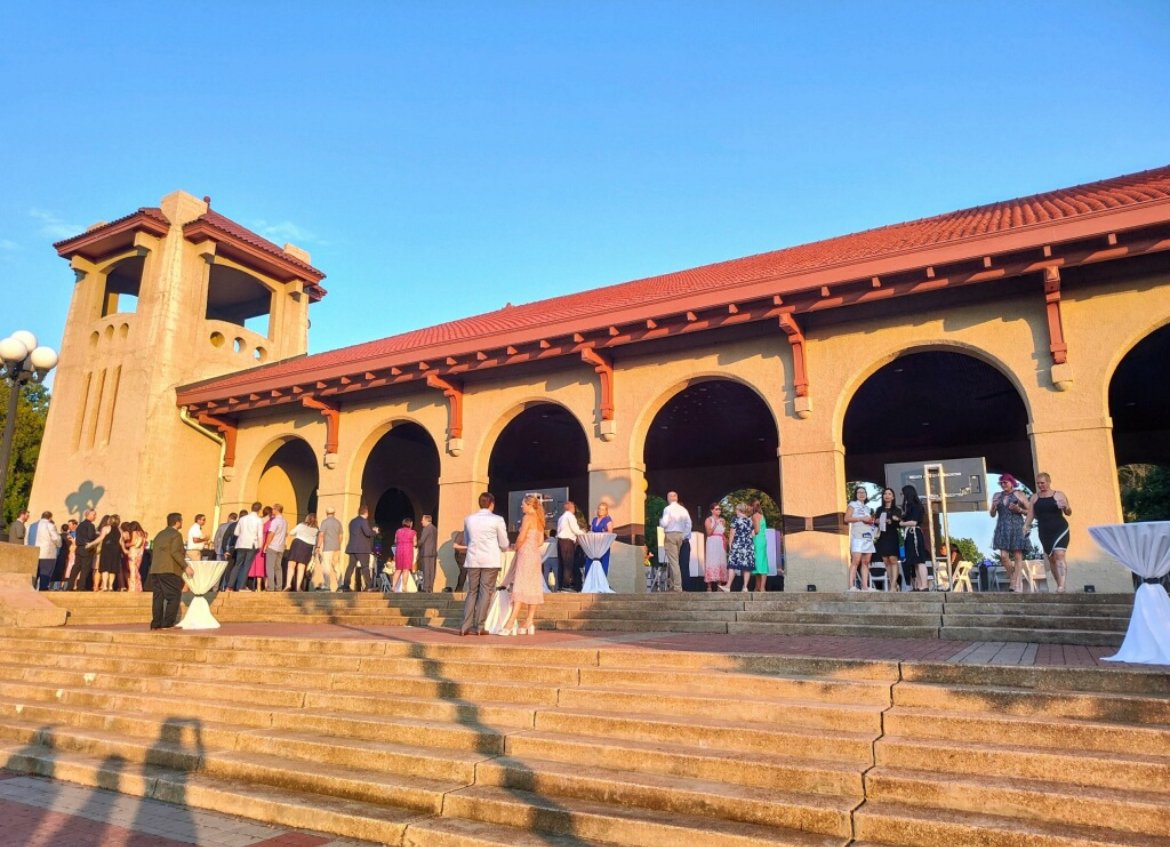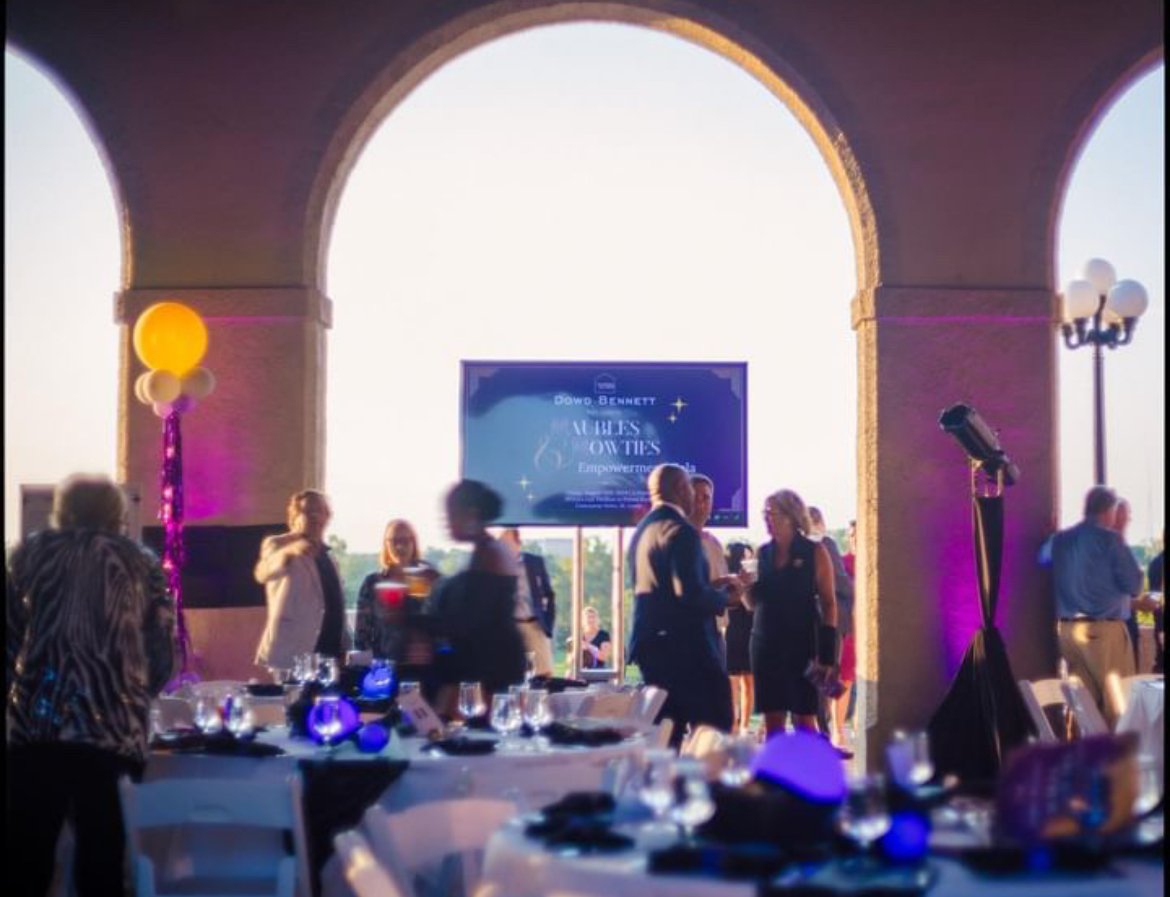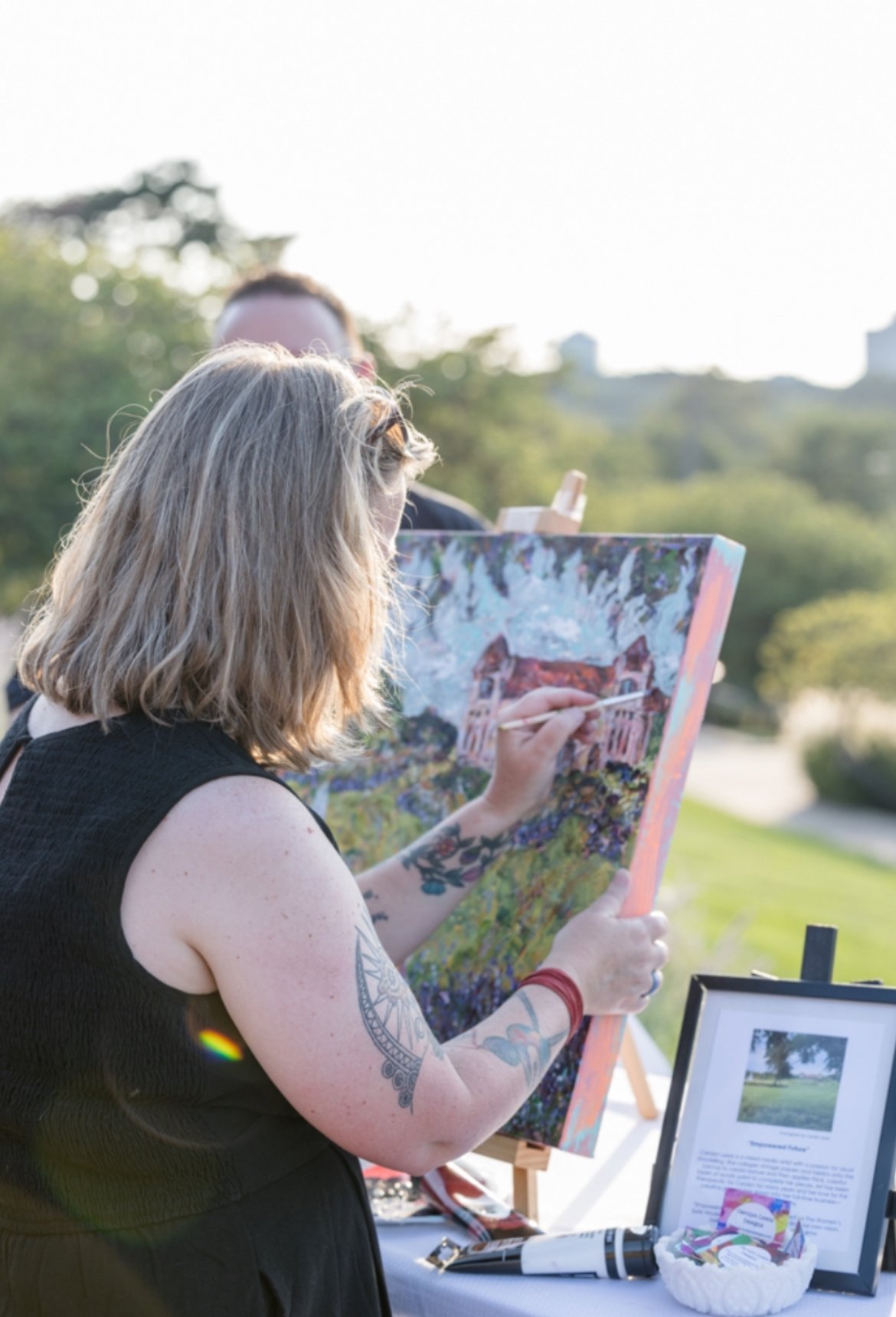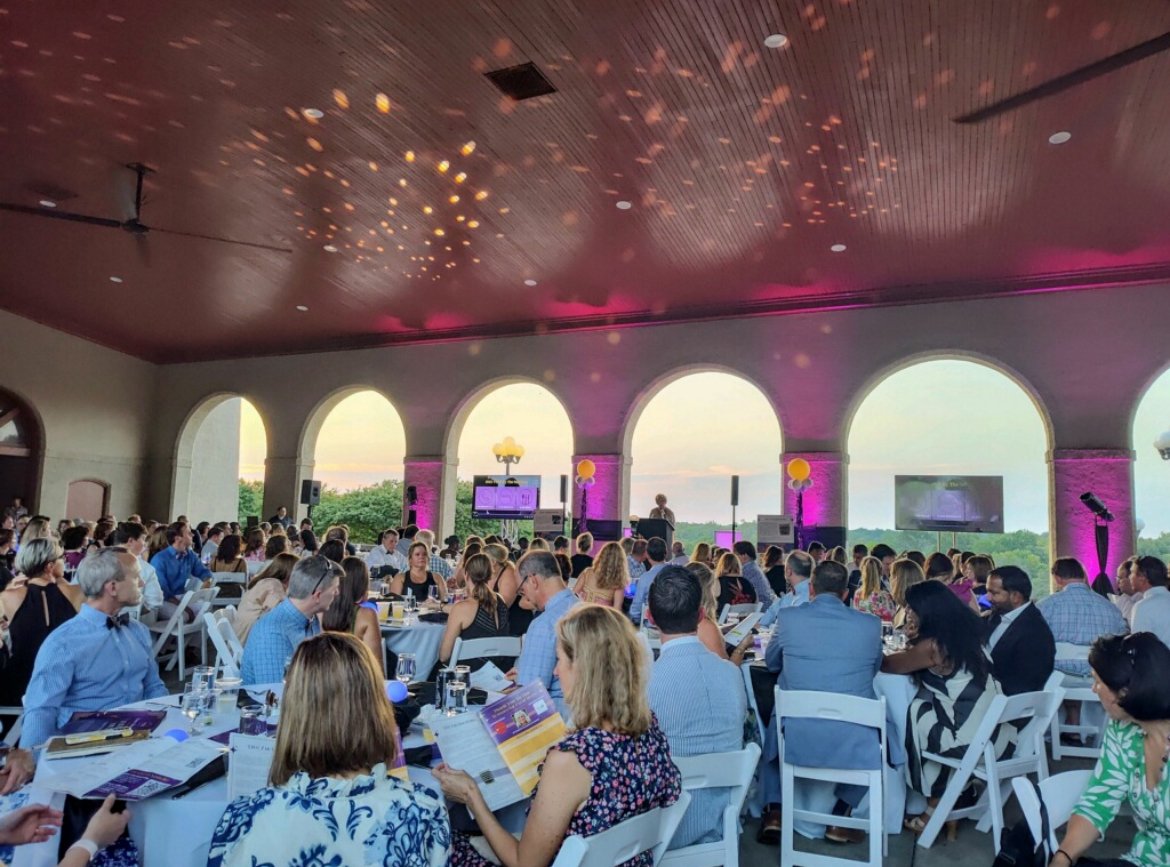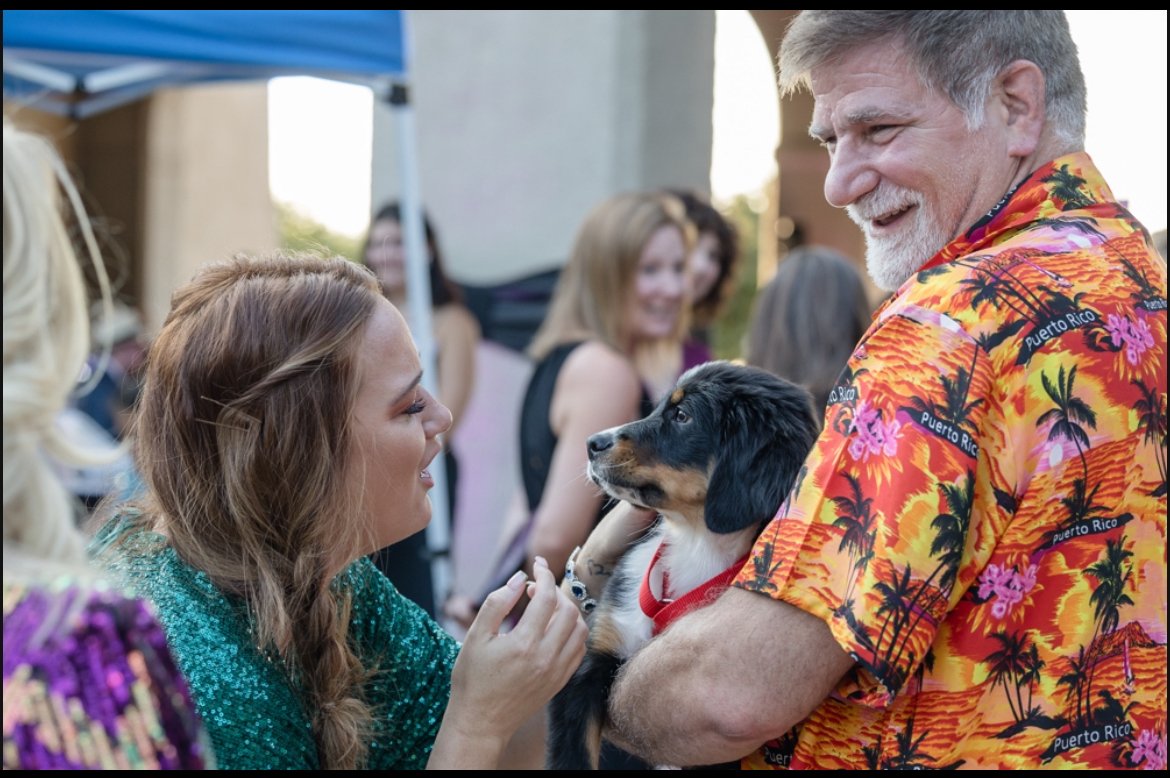The Women’s Safe House: A Place to Call Home for Women in Crisis
For 47 years, The Women’s Safe House of St. Louis has provided a haven for victims of domestic abuse for women and children and is the oldest and largest shelter in the Greater St. Louis area.
by Grayling Holmes / photos and video provided by Women’s Safe House
Imagine that the man who you are in love with has a gun pointed at your head while the child that you both made looks on in horror. Imagine your neighbor calling the police and he flees before they arrive. Imagine you and your daughter sitting in a small apartment shaking with fear knowing that he might return. Imagine that you have no place to go for safety. Who can you turn to for help? Where do you seek refuge? Where can you find another place to call home?
The Women’s Safe House CEO Mary Ann Owens extends a helping hand to one of the children whose mother sought sanctuary at the shelter.
Daily, hourly, minute by minute, second by second, many victims of domestic abuse face this circumstance. It is not something they imagine. It is as real as it gets.
Fact: In the United States, women are assaulted by an intimate partner every nine seconds. Fact: Nearly 20 people per minute are abused by an intimate partner in the US. Fact: 1 in 3 Women have experienced physical violence from an intimate partner in their lifetime. Fact: Missouri ranks 3rd in the nation for the rate of people who have experienced domestic violence. The Women’s Safe House empowers women to break free from these dire facts.
Mary Ann Owens has devoted her life to making sure that, with the right guidance, they learn that the facts that once defeated them can give them power to get out of a crisis situation. When in crisis, 24/7, women in need can call to seek refuge; a place to call home — the Women’s Safe House. “I truly believe that women and children that have suffered domestic or sexual abuse need to flee from that atmosphere. They need a place to go and call home where they can get wraparound services,” said Mary Ann, CEO of The Women’s Safe House of St. Louis. For years, her organization has provided case management, mental health services, and most importantly, a place to live for women and their children in crisis. “We get them jobs. We move them into their own homes or apartments. We free them of their former situations and help them build a new life for themselves,” she went on to say. The Women’s Safe House is a vital lifeline when needed most.
They simply need to dial their crisis hotline at 314-772-4535. “Trained employees and volunteers answer our crisis intervention hotline around the clock with compassion and care – assessing a woman’s safety and providing community referrals when needed,” Mary Ann said.
This video features women who sought sanctuary at The Women’s Safe House in St. Louis.
Bernice (an alias used here to protect her identity) lived the nightmare scenario described above and called the hotline. “For eight years, I lived with a man who loved me and our baby,” she said. “He had always been nice to us, very loving, but one day he started to change,” she said as she conveyed the life-changing memory. “He started hitting me sometimes when he got angry. Then he would come back with gifts telling me how sorry he was.” She went on to describe the classic behavior pattern of abuse that millions of women go through. There are three phases of Post-Traumatic Stress Disorder (PTSD) related to intimate partner violence (IPV). First, the tension in the relationship builds between the abuser and the victim. For eight years it had built. “He was my first real love,” Bernice said. “He treated me so good, but then,” her voice trailed off as if not wanting to speak the bad memories aloud. Next, the tension escalates, and the abuser acts out towards the victim, either physically, emotionally, verbally, psychologically, sexually or a combination thereof. And step three in the cycle of abuse is the one with which Bernice was most familiar. The abuser apologizes and makes promises to change.
But with the gun in her face and her 16-year-old impressionable child looking on that day, it was time for Bernice to make a change. “My neighbor knocked on the door,” she said. “He put the gun away and ran out.” She then described how the police came and gave her numbers of shelters to call. “But they were all full,” she said with pain in her voice as she recalled the dark time. “I sat in my apartment, me and my baby girl. Yes, she was 16, but she was still my baby. We made it through the night, then a miracle happened.”
As luck would have it, although she had called The Women’s Safe House Crisis Hotline, they were full the night before, they called her back. A space had just opened up. “We have about 60 residents at all times, and that’s usually about 20 women and 40 kids,” Mary Ann said. “Demand is so high that we have to turn people away every day. That’s why fundraisers like our annual gala are so important, as are donations from generous individuals and corporations, so that we can provide as much help as possible.” For 47 years, The Women’s Safe House has been a haven for women and is the oldest and largest domestic violence shelter in the Greater St. Louis area.
“We made it to the house safe and sound, both me and my baby,” Bernice said. “For weeks, they gave us everything we needed — food, clothing, shelter, group counseling, one on one counseling, counseling for my baby alone, and counseling with me and my girl.” She went on to say that they set her up in an apartment. “I have my own place now. It’s mine and although I might date again, I know the warning signs, and I know how to do things for myself. The shelter taught me how,” she said, referring to the Women’s Safe House. “The first time they raise their voice, I’m out. And I don’t care how much they apologize, I’m not going back,” she said emphatically. “A lot of people don’t get the chance to start over like I have. Because of the Safe House, I have a new start and it’s beautiful.”
Life at The Women’s Safe House In Pictures
To donate to the Women’s Safe House of St. Louis please visit their site https://twsh.org/support/become-a-donor/ “With each contribution, families are touched, hope is given, and lives are saved. Your support and generosity are crucial in helping them provide safe shelter and critical services to women and children who are fleeing abusive homes. You are helping to provide shelter, counseling, and support to thousands of families and educating thousands more with messages of prevention. In short, you are changing lives,” said Women’s Safe House Development Director McKenna Nguepsi. According to McKenna, donors just need to fill in a brief form online to make a secure, tax-deductible donation.
Donors and participants Who Made a Difference at Last Summer’s Baubles & Bow Ties Gala
Russell Jackson (center) and friends.
Grayling Holmes with The Women’s Safe House Board President Bing Dempewolf of CEO TAI-CHI Consulting.
Todd Ackerman announcing silent auction items.
Women’s Safe House Board President Bing Dempewolf (center) and friends.
Bing Dempewold (current board president), Mary Ann Owens (CEO), and Neal Fister (former board president) wrapping up the gala.
Alex Guiterrez (center) and Mary Ann Owens (right)
Lori Hausladen, 2024’s Gala Chair and former board president of The Women’s Safe House.
Patrons of Baubles & Bow Ties Gala to benefit The Women’s Safe House, August 2024.
Carolyn Lewis, a live painting artist who donated the work of art that she is currently painting.
A representative from Home to Home showing off the puppy donated. Niki Sanders is petting the puppy.
Grayling Holmes, Mary Wimbley.
“In addition to donations, the shelter is looking for board members to use their connections to help us grow,” said The Women’s Safe House Board President Bing Dempewolf of CEO TAI-CHI Consulting. “At the moment, we have five on the executive committee and twelve on the board, but we are growing our partners,” she said. When asked what the function of the board was, she said “To make sure that we’re running the house the right way and to make sure that we keep everyone safe.” She underscored this by saying “We need to keep getting information out to the world because we’ve been a secret for such a long time.” She then said something that astounded me, “When I came on the board, I asked why we are such a secret. A long time ago, I was in a very violent domestic relationship myself. I didn’t know about the safe house, and although I didn’t need a place to stay, I am motivated to help women who were victimized like I was, and because they have no place else to go, need a safe house.”
The Women’s Safe House CEO Mary Ann Owens
According to Mary Ann, “The demographic of the house is probably about 90% African American and 8% white. We also have some Hispanic and Asian ladies. We accept everyone and are very welcoming to people from the LGBTQ+ community.”
Women of limited means like Bernice are the primary demographic. “In the future we hope to continue to help many more like her, but with 20 beds for women and 40 for children there is so much we can do.”
Every hour, every minute, every 9 seconds, women are assaulted by an intimate partner. The math does not add up. If the oldest, and largest sanctuary for women in the metro can only provide care for 60 residents at a time, then what do the rest do? The answer is twofold: one, to create awareness of the staggering statistics, and two, to raise funds to meet the needs of the most fragile at the time when they need it most. The Women’s Safe House has been doing its part for the better part of half a century. But they cannot do more without you.
To learn more about The Women’s Safe House, please visit https://twsh.org/
About The Women’s Safe House
The Women’s Safe House – Founded in 1977, The Women’s Safe House, formerly St. Louis Abused Woman Support Project, was the first domestic violence shelter in St. Louis; operating solely with volunteer support. Originally, the shelter was located in a turn-of-the-century Victorian style house in the St. Louis Area. The original facility, rented from the Sisters of Loretto for just $1 per year, could accommodate up to 26 women and children.
In 1995, with no option to either secure a long-term lease or purchase the property, coupled with the growing need for additional space to accommodate the high volume of women and children escaping domestic and sexual abuse, the Board of Directors embarked on a formal process to relocate the shelter. A capital campaign was initiated and more than $1 million were raised to apply towards the purchase of a new building.
By 1999, The Women’s Safe House moved to its current location that offered space for 35 women and children, a commercial kitchen/dining room, children’s play area, space for group sessions, storage, staff offices, and a conference room. Phase II of the renovation was completed in late 2003, enabling the shelter to offer emergency shelter to a total of 60 women and children.

